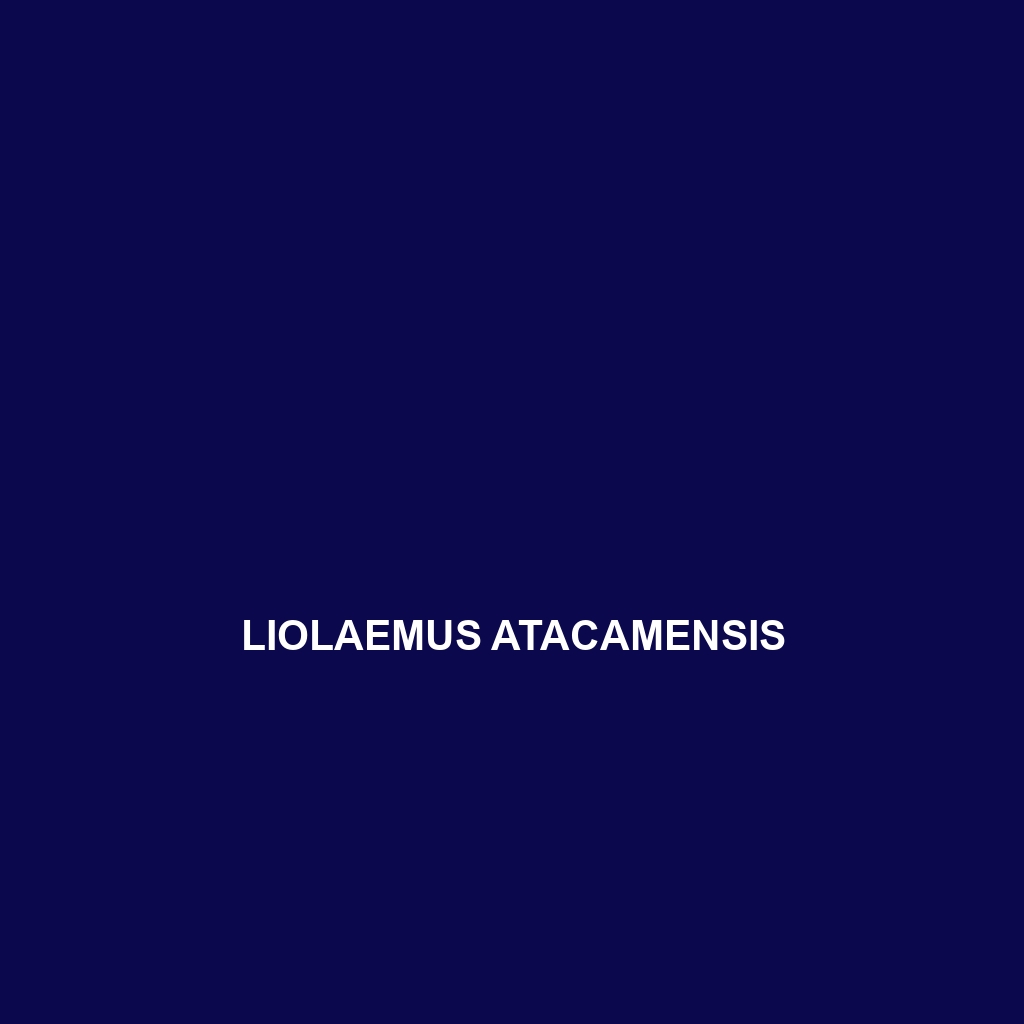Common Name
Liolaemus atacamensis
Scientific Name
Liolaemus atacamensis
Habitat
Liolaemus atacamensis, commonly known as the Atacama Lizard, primarily inhabits the arid and semi-arid regions of the Andean mountains and the Atacama Desert in Chile. This species is adapted to thrive in extreme environments characterized by low precipitation and high temperatures during the day, making it a unique inhabitant of rainforests located at higher altitudes, as well as savannas with sparse vegetation. The Atacama Desert’s rocky outcrops and crevices serve as vital shelters and basking spots for these lizards, helping them regulate their body temperature. The combination of these environmental conditions makes the habitat of Liolaemus atacamensis a remarkable study in evolutionary adaptation and survival.
Physical Characteristics
Liolaemus atacamensis showcases distinct physical features that contribute to its identification. Typically, this lizard measures between 10 to 15 cm in length, with a robust, elongated body that allows for efficient movement in rocky terrains. The scales are usually a mixture of browns, greens, and grays, providing excellent camouflage against predators. Notably, they possess a long tail, which can be used for balance and escape from threats. The males display brighter colors, often adorned with vivid patterns, especially during the breeding season, which helps signal readiness to mate. Their well-developed limbs aid in climbing and navigating through their rocky habitats, making them agile and resilient.
Behavior
Behaviorally, Liolaemus atacamensis exhibits fascinating traits. These lizards are predominantly diurnal, engaging in various activities during the day such as basking in the sun to regulate their body temperature and foraging for food. Mating rituals can be elaborate; males often engage in territorial displays characterized by head bobbing and push-ups, showcasing their strength and fitness to potential mates. Social interactions can be observed when males encounter each other, leading to dominance displays to assert their territories. These behaviors reveal a complex social structure and emphasize the importance of visual signaling in their interactions.
Diet
The dietary habits of Liolaemus atacamensis categorize them as insectivores, primarily feeding on a variety of insects, spiders, and other invertebrates available in their environment. Young lizards may have a diet rich in smaller insects, whereas adults can consume larger prey items. Feeding typically occurs during the warmest parts of the day, and they employ a sit-and-wait strategy to capture unsuspecting prey. Their ability to adapt to a sparse food supply highlights their role as both predator and prey in maintaining the ecological balance within their habitat.
Reproduction
The reproductive cycle of Liolaemus atacamensis is characterized by a seasonal breeding pattern, occurring in the warmer months when conditions are favorable. Mating typically takes place from November to January, with females laying clutches of eggs in hidden locations or giving birth to live young depending on environmental conditions. The gestation period lasts approximately 60 to 80 days, with females displaying maternal care that includes guarding their nests until hatching. This reproductive strategy is critical for ensuring the survival of their offspring in a harsh environment.
Conservation Status
According to various conservation assessments, Liolaemus atacamensis is currently listed as least concern, indicating a stable population within its native habitat. However, threats from habitat destruction, climate change, and human encroachment pose potential risks to its future. Continuous monitoring and conservation efforts are crucial to ensure the survival of this unique species. Preservation of its natural habitat and the promotion of sustainable land use practices are vital steps in safeguarding the Atacama Lizard from potential declines.
Interesting Facts
Liolaemus atacamensis possesses several remarkable adaptations that enhance its survival in extreme environments. For instance, these lizards can tolerate extreme heat and have developed behavioral strategies to avoid desiccation, such as remaining in shaded areas during peak temperatures. They are also prolific climbers, capable of navigating steep rock faces with ease. An interesting behavior observed in this species is their ability to change color slightly depending on the temperature, aiding in thermoregulation.
Role in Ecosystem
The ecological role of Liolaemus atacamensis is significant, as they act as both predator and prey within their ecosystem. By controlling insect populations, they contribute to maintaining the balance of their habitat. Additionally, they serve as food for a variety of predators, including birds and mammals. This interconnectedness highlights their importance in the food web, where each species plays a role in sustaining the health of their environment, denoting Liolaemus atacamensis as a vital component of its ecosystem.
